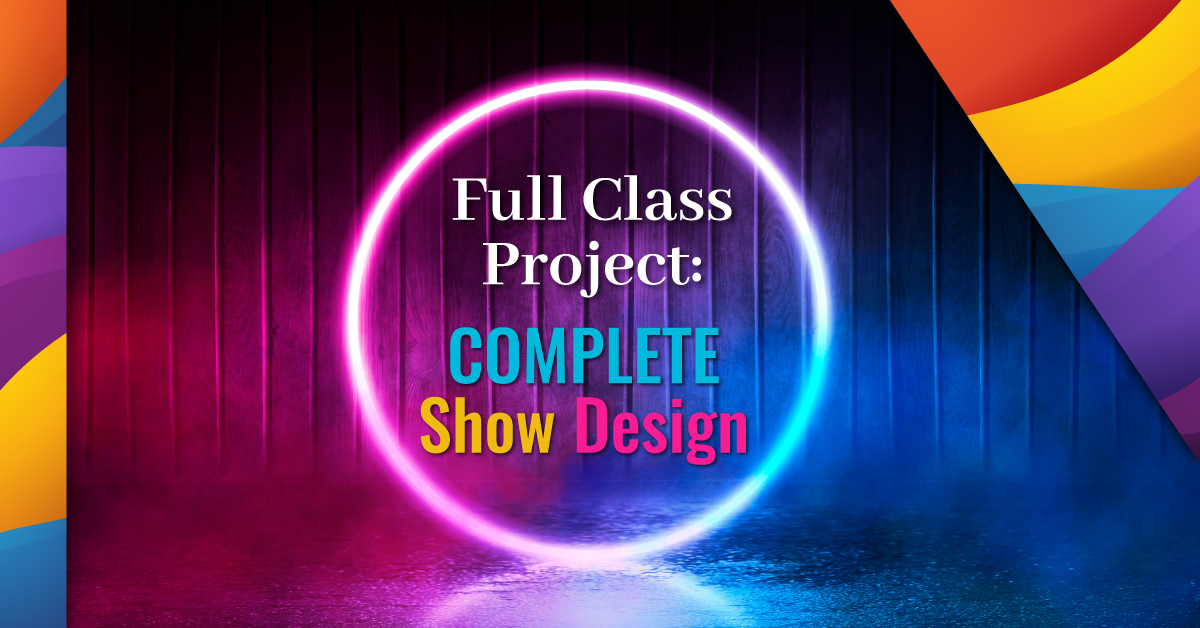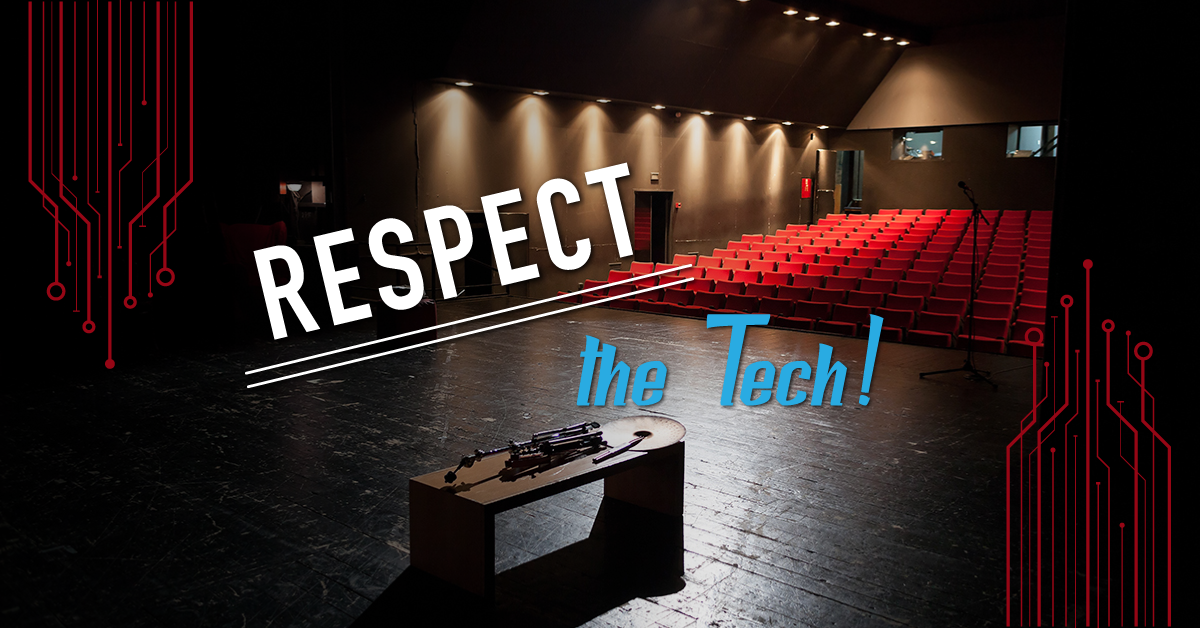A squirt gun would never be mistaken for a real gun, right? Dive into the thought-provoking world of Water. Gun. Argument and challenge what we choose to believe. A thought provoking and powerful piece in a docu-theatre style.
Full Class Project: Complete Show Design
The following exercise is a large-scale culminating project for your entire class.
Students will form small groups and work together to create design concepts for a play in six areas of technical theatre: sound design, lighting design, set design, costumes, props, and hair/makeup. Each group is responsible for completing four components:
- an inspiration component
- a research component
- a practical component
- an analysis component
This is a great way for students to demonstrate what they’ve learned throughout the semester or challenge themselves to explore a new technical area. Students will gain a broader appreciation of all the factors that go into creating a cohesive theatrical design.
Before you start: Don’t worry if you’re not a technical expert! Check out our Technical Theatre section in the Theatrefolk Learning Centre for lots of technical advice. Three good articles to start with are:
Tech Exercises for the Non-Technical Teacher
Tips for Success When Tech Isn’t Your Specialty
Tips for First-Time Lighting Designers
Instructions:
1. Select a play that the entire class will design for.
2. Divide students into six groups. Assign each group one of the following areas of technical theatre: sound design, lighting design, set design, costumes, props, and hair/makeup.
3. In this exercise, you (the teacher) will act as director of the selected show, and share your overall vision/concept with your design teams (your students). For example, Romeo & Juliet under the sea, Alice in Wonderland in outer space, a steampunk Beauty and the Beast, or a film noir Antigone. Feel free to give as many or as few details as you wish.
If you’d like to give students more artistic freedom, try one of the following options:
Option B: Have each group pitch a vision/concept (for example, Romeo & Juliet in the jungle, Wild West Romeo & Juliet, or Romeo & Juliet in the year 3000) and allow the class to vote on one.
Option C: Scrap the director idea and have each group come up with their own original design concept for the selected play, without consulting other groups.
4. Once the design concept is settled, each group must complete their design projects, which will consist of the following four parts:
a) Inspiration: An inspiration collage or mood board featuring colours, textures, sketches, photographs, or cutouts that illustrate the concept. (Minimum size: 12 inches by 12 inches)
b) Research: A written (or audio/video recording if that works better for your students) research component on one aspect of the concept. For example, if the concept is “in the jungle,” which specific jungle is the group focusing on? What plants and animals are native to the area? Are there any films, television programs, or documentaries set there? Are there any major current events or important historical events that occurred there? Tailor the questions as appropriate to the selected design concept. (Minimum length: 1 page)
c) Practical: A practical sample element that is relevant to the technical design area, such as a sound playlist, a lighting plot and gel sample display or a found lighting demonstration (live or filmed), a scale model set, an original costume design or built costume, a built prop, an original hair/makeup design, a designed wig, or a makeup demonstration (live or photographed). Students may have their own suggestions as well.
d) Analysis: A written (or audio/video) component describing how and why the group made the design choices they did. (Minimum length: 1 page)
5. Have your students share their projects with the rest of the class, either as group presentations or as a fair-style presentation around the classroom.
6. Discuss how each group approached their design work. Do the different theatrical areas work together as a whole? Why or why not? Do they support the director’s overall vision? What could be adjusted to work better together?
7. Each student will complete and submit an individual reflection (found below).



